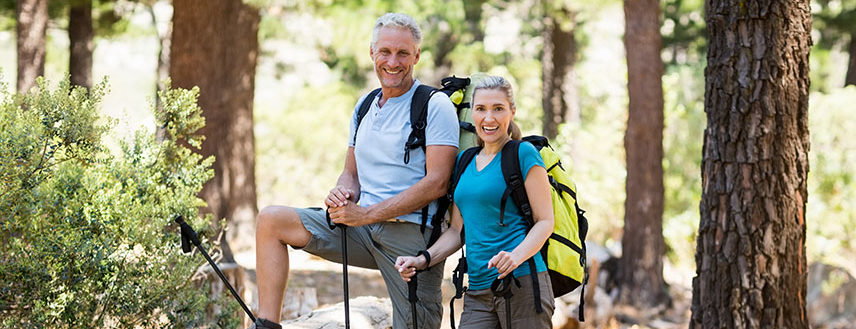
Staying active as you get older doesn’t need to be complicated. But it is important to incorporate various types of exercise into your daily routine. This will help reduce monotony thereby increasing your chances of sticking with it. By changing things up, you will also increase the overall health benefits of the exercise. There are four building blocks of exercise for the aging and each one helps your body in different ways.
- Cardio Endurance Exercise
What is it? Cardio endurance uses large muscle groups in rhythmic, repetitive motions over a period of time. Cardio workouts get your heart pumping and you may even feel a little out of breath. Cardio exercises can include walking, stair climbing, swimming, hiking, cycling, rowing, tennis, and dancing. Depending on the intensity, it can also include household chores such as gardening or vacuuming!
Why it’s good for you: Cardio exercise helps lessen fatigue and shortness of breath. It promotes independence by improving endurance for daily activities such as walking, house cleaning, and errands
2. Strength and Power Training
What is it? Strength training builds up muscle with repetitive motion using weight or external resistance from body weight, machines, free weights, or elastic bands. Power training is often strength training done at a faster speed to increase power and reaction times.
Why it’s good for you: Strength training helps prevent loss of bone mass, builds muscle, and improves balance, which is important not only for staying active, but also avoiding falls. In practical terms, power training can improve your speed while crossing the street, for example, or prevent falls by increasing your reaction time if you start to trip or lose your balance. Building strength and power will help you stay independent and make day-to-day activities easier such as opening a jar, getting in and out of a car, and lifting objects.
3. Flexibility
What is it? Flexibility challenges the ability of your body’s joints to move freely through a full range of motion. This can be done through stationary or mobile stretches to keep your muscles and joints supple, so they are less prone to injury. Yoga is an excellent means of improving flexibility and you don’t have to be super flexible to begin.
Why it’s good for you: Flexibility helps your body stay limber and increases your range of movement for ordinary physical activities such as turning to look behind you when the car is in reverse, tying your shoes, reaching up to wash your hair, and even playing with your grandchildren.
4. Balance
What is it? Balance maintains standing and stability, whether you’re stationary or moving around. Try yoga, Tai Chi, and posture exercises to gain confidence with balance.
Why it’s good for you: Improving your balance can help with posture and quality of your walking. It also reduces your risk of falling. Plus, as your balance improves, you will become more confident and less fearful of falling and causing injuries.

Leave a Reply